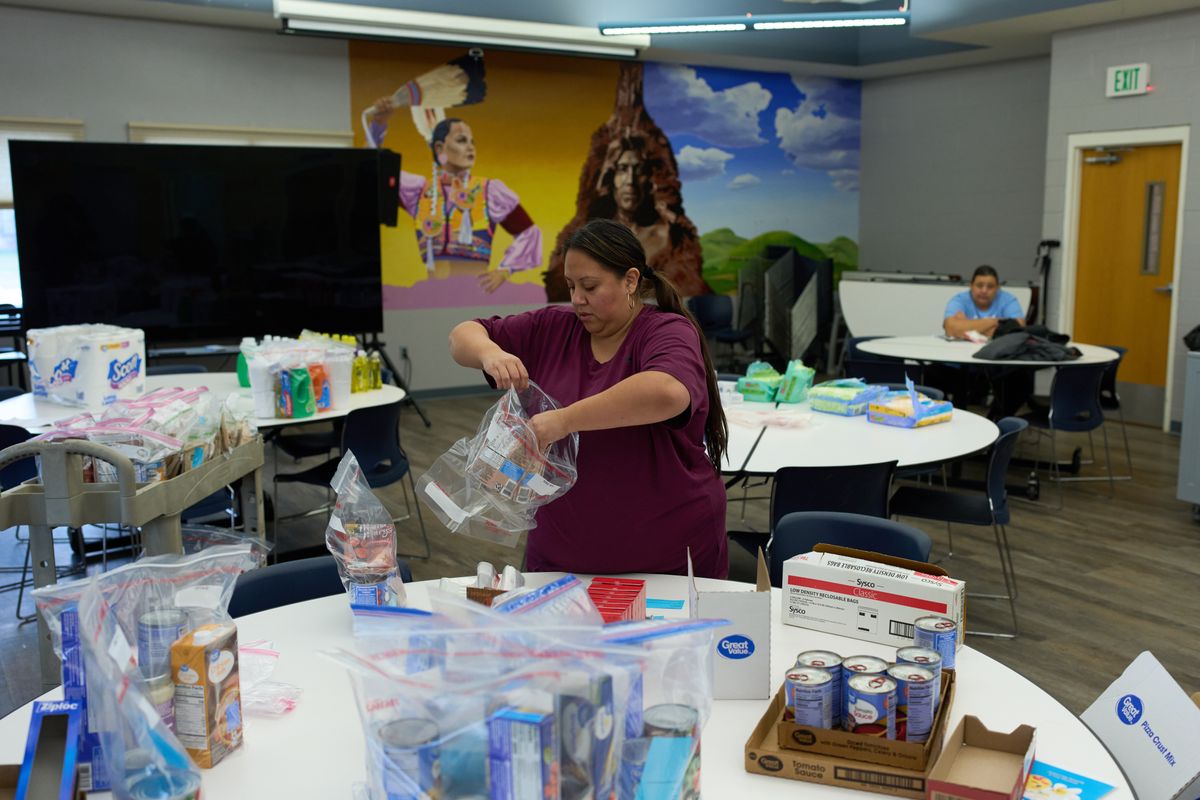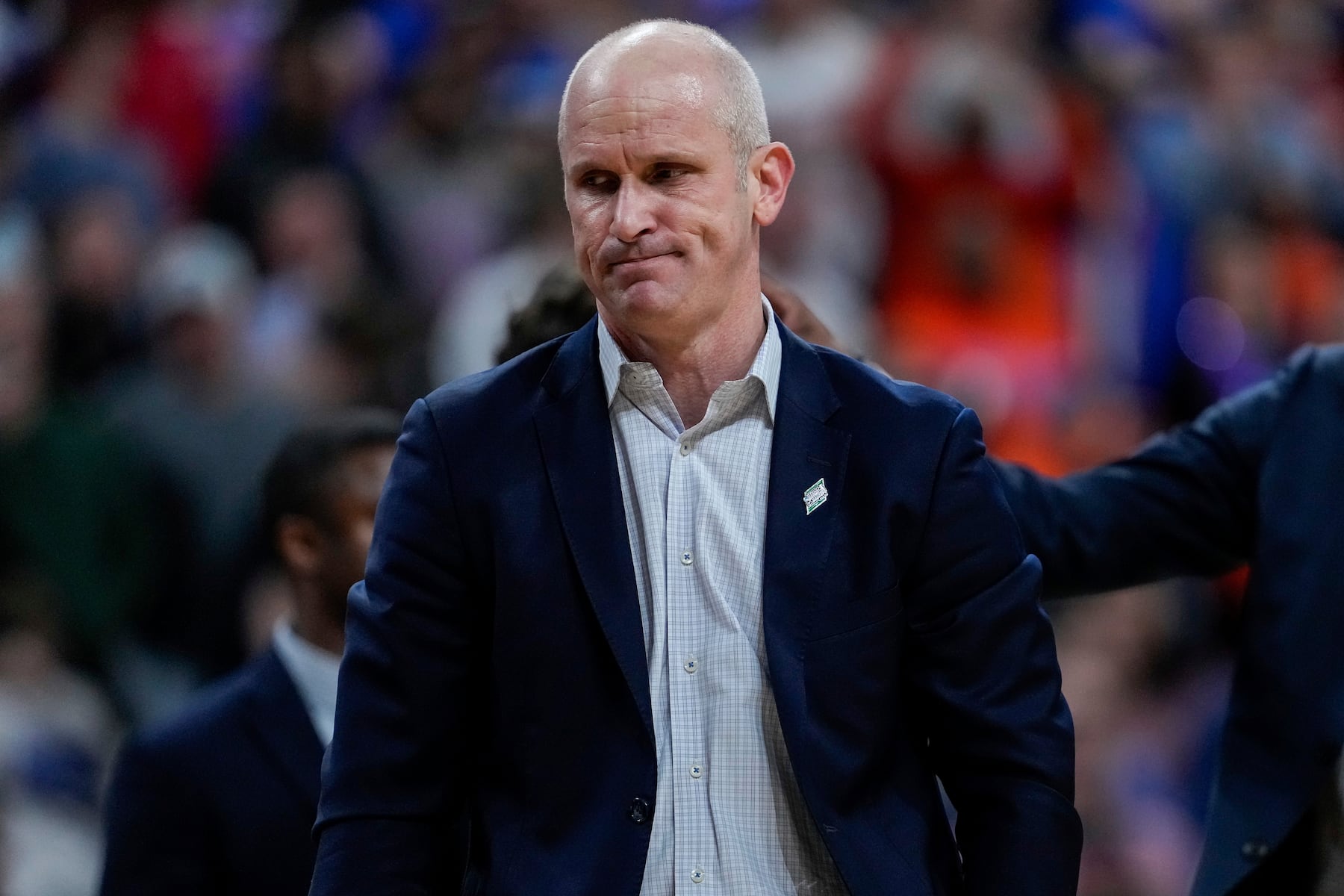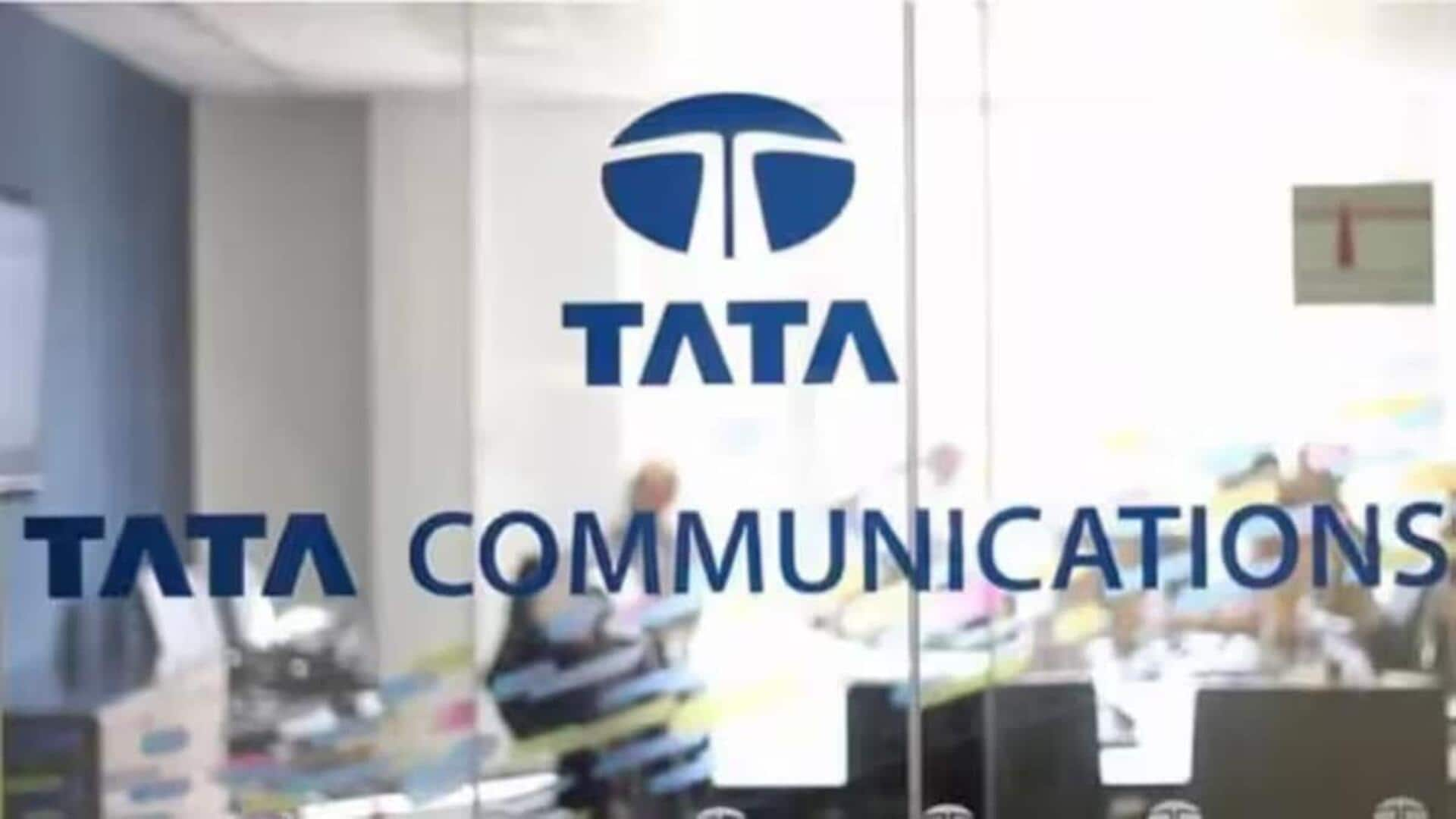SACRAMENTO, Calif. (AP) — Acorn squash, Spam, and baby food lined the shelves on a recent day at a college food pantry in California’s capital city. This resource has become increasingly vital for students receiving federal aid to purchase groceries, as that assistance has been in limbo during the government shutdown.
Hundreds of students at California State University, Sacramento, or Sac State, visit the school’s Basic Needs Resource Center every week. There, they can select up to a dozen items per trip, ranging from fresh produce and meat to toiletries and secondhand clothes.
“It’s a big blessing,” said Antonette Duff, a junior studying psychology at the university who’s enrolled in the federal Supplemental Nutrition Assistance Program (SNAP), formerly known as food stamps.
More than 3,600 students at the college of roughly 31,000 receive aid through SNAP, said Emily Tupper, the college’s director of Crisis Assistance and Resource Education Support. Statewide, over 200,000 college students in California and 1.1 million nationwide receive SNAP benefits, according to the California Department of Social Services and the U.S. Government Accountability Office, respectively.
Many students are grappling with tuition and housing bills, juggling classes, and often working lower-paying part-time jobs, making it difficult to afford groceries as prices rise.
SNAP benefits for roughly 42 million people across the U.S. were cut off at the beginning of November due to the government shutdown. Although a federal judge ordered the Trump administration last week to fully fund the program, the U.S. Supreme Court granted the administration’s emergency appeal late Friday, temporarily blocking that order.
The mixed messaging has left students who rely on SNAP confused and colleges striving to curb hunger on campus by spreading awareness about food pantries and distributing free meals.
“It just puts students in a really horrible position,” said Mike Hannigan, a student at Greenfield Community College in Massachusetts and an advocate against food insecurity on college campuses.
Hannigan typically receives just under $300 a month from SNAP, but benefits did not come through at the beginning of November due to government delays. If SNAP benefits continue to be delayed, he’s uncertain about how he would afford groceries.
Some students, especially those at community colleges who don’t have meal plans, face tough decisions. “They may have to decide whether or not they are going to attend a class or pick up an extra shift to make money to feed themselves or their families,” Hannigan said.
### Campus Food Pantries and Farmers Markets Offer Relief
To help combat food insecurity, campus food pantries and farmers markets are providing some relief.
Hannigan and other students recently hosted a free farmers market on campus, distributing thousands of pounds of vegetables from local farms. All food was distributed, with nothing left over.
At Nueta Hidatsa Sahnish College, a tribal college of about 250 students in North Dakota, ‘Soup Tuesdays’ provide free meals on campus. Students also have access to a food pantry and meal kits with easy-to-prepare dishes like chicken Alfredo or chili. Soon, the college will offer gift cards for local grocery stores.
Many people living on tribal land or in rural areas are in so-called food deserts with limited grocery store access, said college President Twyla Baker. The SNAP uncertainty caused by the political stalemate in Washington adds another layer of difficulty.
“To essentially use the most vulnerable as political pawns is just untenable,” Baker said. “It’s unsustainable, and it’s detrimental to the country as a whole.”
### Rising Food Insecurity on College Campuses
Food insecurity among college students has risen over the past decade. Students often stretch their budgets to cover necessities, said AJ Scheitler, director of the Data Equity Center at UCLA’s Center for Health Policy Research.
“Students will first make sure they pay for tuition and books to stay enrolled,” she explained. “After that, they focus on transportation to get to school, then housing. Food almost becomes something they can go without if needed, after all those expenses.”
At Sac State, food pantries host grocery pop-ups twice a month, where students can pick up fresh produce for free. If federal food aid delays continue, the college may increase the frequency of these events, said Tupper.
At the University of New Mexico in Albuquerque, where at least 4.5% of students receive SNAP benefits, officials encourage donations of food, funds, or volunteer time to support the campus food pantry.
Between 100 and 150 students visit the pantry daily, said Lisa Lindquist, director of the LoboRESPECT Advocacy Center. The pantry is free and open to all students. Some fill baskets with as much as 10 pounds (4.5 kilograms) of food per visit, while others seek snacks to hold them over between classes.
The pantry relies on donations but occasionally staff must purchase additional items to keep shelves stocked.
“It’s not for a lack of donations; it’s that food goes in and out quickly,” Lindquist said. “That tells me anecdotally there’s great need.”
### Students Stressed Over Food Aid Uncertainty
July Star Medina, a senior studying biology at Sac State, recently spent about $30 on chicken and a few spices at the grocery store. She has visited the Basic Needs Resource Center more frequently after her SNAP benefits decreased from $290 to $120 a month earlier this year.
Her benefits were reduced after she worked more hours during the summer, but have not increased despite working fewer hours during the fall semester.
“I don’t think it’s enough at all,” Medina said. “After one week of groceries, that’ll maybe last me two weeks.”
The possibility of losing that $120 assistance has been stressful.
“That’s why I’ve been trying to come here to see what I can get,” Medina said outside the center. “Now I need to see where I can pull money aside to just get basic things.”
Scheitler described the uncertainty as “just so rough” for students.
“The number of students who may have to drop out because they need to eat will rise,” she warned. “Their grades will fall. Their mental health will suffer due to the stress of not being able to eat. This will have a significant impact if it’s not addressed quickly.”
—
Associated Press Southwest chief correspondent Susan Montoya Bryan in Albuquerque, New Mexico, contributed to this report.
https://mymotherlode.com/sports/college-sports-general-news/10163311/college-students-stressed-about-federal-food-aid-uncertainty-look-to-campuses-for-support.html



